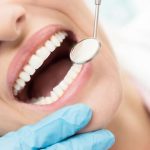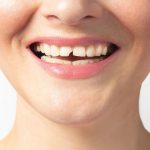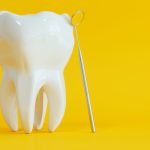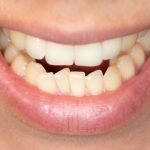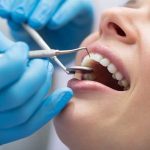Teeth Shifting Without Retainer: How Long Does It Take?

Teeth shifting without a retainer is a common phenomenon that many people experience after getting their braces off. It is a natural process that occurs when the teeth start to move back into their original position. The time it takes for teeth to shift without a retainer varies from person to person, and it depends on various factors such as the severity of the misalignment, the age of the person, and their oral hygiene routine. One of the main reasons why teeth shift without a retainer is due to the lack of support that the retainer provides. After the braces come off, the teeth are susceptible to shifting because they are no longer being held in place by the wires and brackets. Without a retainer, the teeth will start to move back into their original position, and this can cause the misalignment to recur. This is why it is essential to wear a retainer consistently after getting braces off, to prevent the teeth from shifting and maintain the alignment achieved by the braces.
When teeth are shifted without the use of a retainer, it typically takes a varying amount of time for noticeable changes to occur. Teeth naturally shift over time due to various factors such as aging, genetics, and oral habits. Without the use of a retainer, teeth can shift more rapidly and unpredictably. The length of time it takes for noticeable shifting to occur depends on several factors, including the age of the individual, the severity of the misalignment, and the frequency of oral habits that contribute to shifting. In some cases, teeth can shift significantly within a few months, while in others, it may take several years for noticeable changes to occur. It is important to maintain regular dental check-ups and to follow any recommendations made by a dentist or orthodontist to prevent unwanted shifting and maintain optimal oral health.
Wearing a retainer is crucial to maintaining the results of orthodontic treatment. After braces or Invisalign, teeth have a tendency to shift back to their original positions. The retainer helps to hold the teeth in their new position, ensuring that all the hard work and investment put into the orthodontic treatment is not lost. Neglecting to wear a retainer as prescribed by the orthodontist can result in a relapse of dental misalignment, which can take a lot of time and effort to correct again. It is important to remember that teeth shifting is a natural process, and as we age, our teeth will continue to move. However, wearing a retainer can help to reduce the amount of shifting, and ensure that you maintain your beautiful, straight smile for years to come.
Factors Contributing to Teeth Shifting
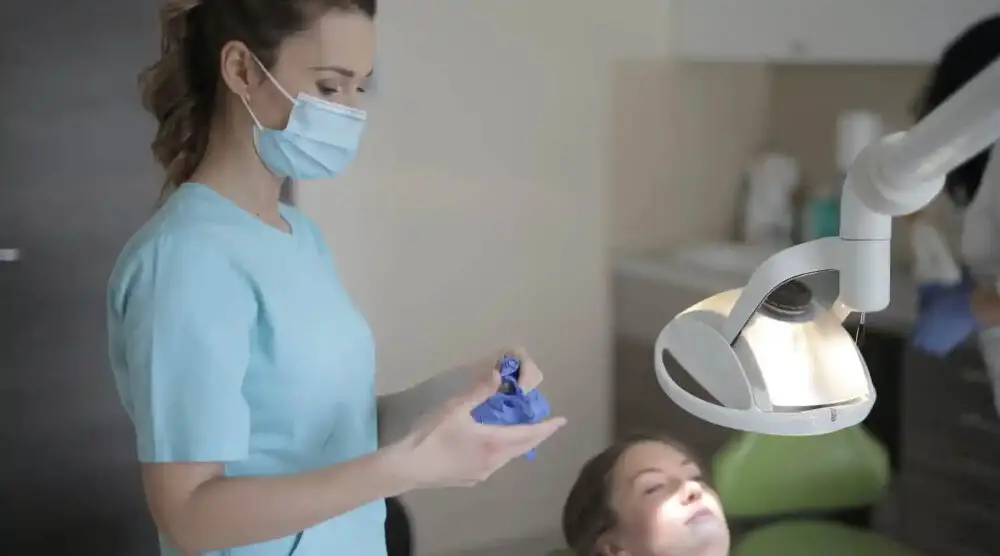
Teeth shifting can occur due to several factors, including age, genetics, and habits such as teeth grinding and clenching. As we age, our teeth naturally shift and move due to changes in the jawbone and surrounding tissues. This process can be accelerated by certain habits, such as nail-biting, which can put pressure on the teeth and cause them to shift. Genetics also play a role in teeth shifting, as some people may be predisposed to having teeth that are more prone to movement. Additionally, trauma to the mouth or jaw can cause teeth to shift, as can certain medical conditions that affect the bone and tissue in the mouth. Another factor that can contribute to teeth shifting is the lack of a retainer. After undergoing orthodontic treatment, such as braces, a retainer is often used to help keep the teeth in their new position. Without a retainer, the teeth can gradually shift back to their original position over time. This process can take anywhere from several months to several years, depending on the individual and the severity of the shifting. It is important to wear a retainer as directed by your orthodontist to ensure that your teeth remain in their new position and to avoid the need for additional orthodontic treatment in the future.
Lack of retainer usage can cause teeth to shift out of alignment, even after orthodontic treatment. Retainers are essential to maintaining the position of teeth and preventing them from moving. The duration it takes for teeth to shift without a retainer varies from person to person, but it can happen as soon as a few months after treatment. The teeth can shift back to their original position or even become more misaligned than before. Neglecting to wear a retainer can undo all the hard work and money invested in orthodontic treatment. It is important to follow the orthodontist’s instructions and wear a retainer as directed to ensure that the teeth remain in their proper position.
Genetics plays a significant role in determining one’s dental structure and teeth shifting tendencies. The genetic makeup of an individual determines the size of their jaw, the shape of their teeth, and the strength of their bones. In some cases, genetic factors may lead to overcrowding or misalignment of teeth, making them more susceptible to shifting. Additionally, genetics can influence the strength of the connective tissues that hold teeth in place, making some people more likely to experience teeth shifting without proper retention. While there are many factors that contribute to teeth shifting, understanding the role of genetics can help individuals better understand their specific dental needs and take preventive measures to ensure the longevity of their dental health.
Age is a significant factor when it comes to teeth shifting without a retainer. As we age, our teeth naturally shift due to changes in the structure and density of our bones. Additionally, lifestyle factors such as gum disease, tooth loss, and tooth decay can also contribute to shifting teeth. The rate at which teeth shift varies from person to person, but generally, the older we get, the more likely it is that our teeth will shift. However, it’s important to note that wearing a retainer as prescribed by your orthodontist can help prevent teeth from shifting, regardless of age.
Trauma can have a significant impact on the alignment of teeth, causing them to shift out of place. This can be the result of a physical injury or an emotional experience that has caused stress and anxiety. The body’s response to trauma can lead to changes in the jaw and surrounding tissues, which can ultimately affect the position of the teeth. It is important to address any traumatic experiences and seek appropriate treatment, as well as take measures to ensure proper dental care and maintenance to avoid further shifting of the teeth. Regular check-ups with a dentist and the use of a retainer can also help to prevent further shifts in the teeth.
How Long Does Teeth Shifting Take?

Teeth shifting is a common phenomenon after orthodontic treatments. It can happen to anyone, regardless of age and gender, and can be caused by various factors such as aging, genetics, and lifestyle habits. However, the duration of teeth shifting can vary from person to person depending on several factors such as the severity of misalignment, the type of orthodontic treatment, and the patient’s commitment to oral hygiene. Typically, teeth shifting occurs gradually over time, and the results may not be noticeable immediately. In most cases, it takes about six months to a year for teeth to start shifting after orthodontic treatment, and the process can continue for several years. The length of time it takes for teeth to shift without a retainer also depends on the type of shifting. Minor shifting, such as small gaps or slightly crooked teeth, may take only a few months to correct. However, more severe shifting, such as significant misalignment and malocclusion, can take several years to correct. It’s important to note that teeth shifting can lead to a host of dental problems, including tooth decay, gum disease, and temporomandibular joint (TMJ) disorders. Therefore, it’s crucial to seek immediate dental treatment if you notice any teeth shifting or other dental problems. Overall, proper oral hygiene and regular dental checkups can help prevent teeth shifting and maintain healthy teeth and gums.
The timeframe for teeth shifting without a retainer can vary greatly depending on several factors. The degree of misalignment of the teeth, age of the individual, and the amount of time since the braces were removed can all affect the speed at which the teeth shift. In general, teeth can begin to shift within a few weeks of the braces being removed, and significant movement can occur within the first few months. However, without the support of a retainer, the teeth may continue to shift over time, leading to relapse of the original alignment. It is important to consult with a dental professional to determine an appropriate plan for maintaining the alignment of the teeth after braces are removed.
Teeth shifting speed can vary from person to person due to individual variations such as age, genetics, and oral health. Younger individuals tend to experience faster teeth shifting as their bones are still developing and are therefore more malleable. Genetics also play a role in teeth shifting speed, as some individuals may have teeth that are more prone to movement. Additionally, oral health can affect teeth shifting speed, with individuals who have gum disease or other oral health issues experiencing slower teeth shifting. It is important to note that teeth shifting without a retainer can take longer than with one, as the retainer helps to maintain the desired position of the teeth.
The severity of teeth misalignment can vary greatly from person to person, and it can have a significant impact on overall oral health and appearance. Mild cases of misalignment may only cause cosmetic concerns, but more severe cases can lead to serious dental problems, such as difficulty chewing or speaking, jaw pain, and increased risk of tooth decay and gum disease. Additionally, misaligned teeth can cause self-consciousness and affect one’s confidence and self-esteem. Therefore, it is important to address teeth misalignment as early as possible with the appropriate treatment, such as braces or clear aligners, to prevent further complications and improve oral health and aesthetics.
Can Teeth Shifting be Reversed?

Teeth shifting is a common phenomenon that occurs naturally over time due to various factors such as age, genetics, or habits like grinding teeth. However, teeth shifting can also occur due to incorrect orthodontic treatment or failure to wear the retainer after the treatment, which can lead to misaligned teeth again. The good news is that teeth shifting can be reversed in most cases, but the process can be time-consuming and require a lot of effort. To reverse teeth shifting, it’s important to identify the underlying cause and address it accordingly. For example, if the shifting is due to grinding teeth, the dentist might recommend wearing a mouthguard to prevent further damage. If the shifting is due to incorrect orthodontic treatment, the dentist might recommend undergoing another orthodontic treatment to correct the alignment. In some cases, the dentist might also recommend wearing a retainer to maintain the alignment of the teeth after the treatment. The duration of the reversal process depends on the severity of the shifting, but it can take anywhere from a few months to a few years to achieve the desired results. In conclusion, teeth shifting can be reversed in most cases, but it’s important to address the underlying cause and take the necessary steps to correct it. The duration of the reversal process depends on various factors, but with the right treatment and care, misaligned teeth can be corrected, and a beautiful smile can be restored.
Teeth shifting after not wearing a retainer for an extended period of time can be a frustrating experience. Fortunately, there are several options for teeth alignment that can help correct the issue. One popular solution is traditional braces, which use metal brackets and wires to gradually shift the teeth into their proper position. Another option is clear aligners, such as Invisalign, which are virtually invisible and can be removed for eating and cleaning. For more severe cases, orthodontic surgery may be necessary to correct the alignment of the jaw and teeth. Regardless of the method chosen, it is important to address teeth shifting as soon as possible to prevent further complications and damage to the teeth.
Orthodontic treatment options include traditional braces, clear aligners, and lingual braces. Traditional braces are made of metal brackets and wires that are attached to the teeth. Clear aligners, such as Invisalign, are made of clear plastic and are removable. Lingual braces are similar to traditional braces, but they are attached to the back of the teeth, making them less visible. Orthodontic treatment can help correct teeth that are crooked, crowded, or misaligned. The length of treatment time varies depending on the severity of the case, but it can take anywhere from a few months to a few years to achieve the desired results. It is important to wear a retainer after treatment to maintain the new position of the teeth.
After undergoing orthodontic treatment, it is crucial to wear a retainer to maintain the newly aligned teeth. Teeth tend to shift back to their original position, especially in the first few months following treatment, and wearing a retainer can prevent this from happening. Retainers are custom-made to fit your teeth and should be worn as directed by your orthodontist. Failure to wear a retainer can lead to relapse and the need for additional treatment, which can be costly and time-consuming. By wearing a retainer as prescribed, you can ensure that your smile remains straight and beautiful for years to come.
Prevention of Teeth Shifting
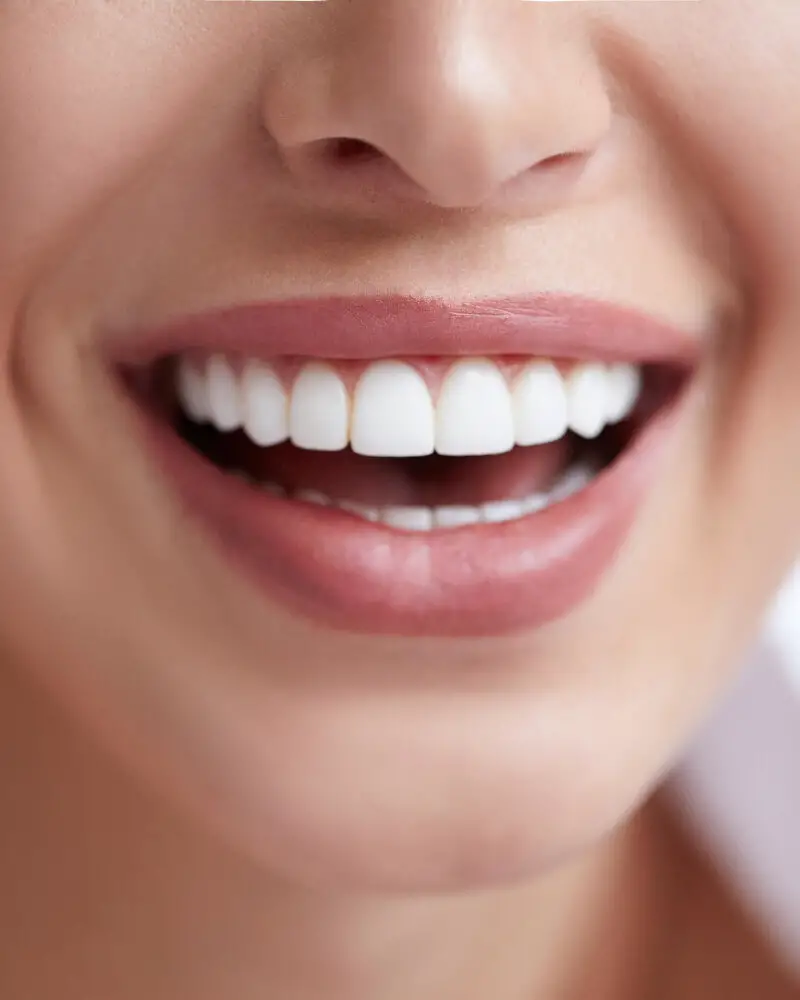
Prevention of teeth shifting is an essential aspect of oral health that requires consistency and dedication. It is crucial to maintain good oral hygiene practices such as regular brushing, flossing, and cleaning with mouthwash to prevent gum disease and cavities that can cause teeth shifting. Additionally, avoiding bad oral habits such as biting nails, chewing ice, and clenching or grinding teeth can help prevent teeth from shifting. Furthermore, it is essential to wear a retainer after orthodontic treatment to keep teeth in their new position and prevent shifting and relapse. Regular visits to the dentist or orthodontist can also help identify any potential issues and prevent teeth from shifting. In addition to good oral hygiene practices and wearing a retainer, maintaining a healthy lifestyle can also help prevent teeth from shifting. A balanced diet rich in calcium and vitamin D can help keep teeth and bones strong, while avoiding sugary and acidic foods and drinks can prevent erosion of tooth enamel that can lead to shifting. Regular exercise and stress management techniques can also prevent teeth grinding and clenching, which can cause teeth to shift over time. Overall, prevention of teeth shifting requires a comprehensive approach that involves good oral hygiene practices, healthy habits, and regular dental checkups to maintain optimal oral health and prevent issues that can lead to shifting.
Wearing a retainer is crucial in maintaining the alignment of your teeth after orthodontic treatment. The retainer serves as a customized appliance that helps keep your teeth in their correct positions. Failure to wear a retainer can result in teeth shifting, and how long it takes for teeth to shift without a retainer varies from person to person. Some individuals may experience teeth shifting within weeks, while others may take months or even years. The longer you go without wearing your retainer, the greater the chance of your teeth shifting out of place. Therefore, it is essential to follow your orthodontist’s instructions and wear your retainer as prescribed to ensure that your teeth remain in their proper positions, and you keep that beautiful smile you have worked so hard to achieve.
Regular dental checkups are crucial to maintaining good oral health and preventing teeth shifting without a retainer. These checkups allow dentists to detect any dental issues and provide early intervention, which can prevent more severe problems from developing. During a dental checkup, dentists will clean teeth, examine teeth and gums, and take X-rays if necessary. They can also provide advice on how to maintain proper oral hygiene and recommend any necessary treatments or procedures. By scheduling regular dental checkups, patients can ensure that their teeth and gums remain healthy, and any potential issues are addressed promptly, reducing the risk of teeth shifting without a retainer.
Maintaining proper oral hygiene is crucial in preventing teeth shifting and avoiding any dental problems. Brushing teeth twice a day with fluoride toothpaste, flossing daily, and using mouthwash can help remove plaque and bacteria that cause tooth decay and gum disease. A healthy diet rich in calcium, vitamins, and minerals can also strengthen teeth and gums. It is essential to visit the dentist regularly for check-ups and cleanings to monitor any potential dental issues and ensure a healthy smile. Neglecting proper oral hygiene can lead to teeth shifting, which can be uncomfortable and affect the appearance of the teeth and face. By following a good oral hygiene routine, individuals can keep their teeth healthy, prevent shifting, and maintain a beautiful smile.
Wearing a retainer is a crucial part of maintaining the alignment of your teeth after undergoing orthodontic treatment. The retainer helps to keep the teeth in their new position and prevent them from shifting back to their original location. While the length of time required to wear a retainer varies depending on the individual case, it is recommended to wear it for at least several months if not years. Neglecting to wear a retainer can lead to costly and time-consuming dental work in the future. The retainer helps to preserve the investment you made in your smile by keeping your teeth straight and healthy. So, make sure to follow your orthodontist’s instructions and wear your retainer as directed to maintain the beautiful smile you’ve worked so hard to achieve.
It is crucial to acknowledge the importance of taking preventative measures when it comes to teeth shifting. Wearing a retainer after braces or clear aligners is a crucial step in preventing teeth from moving back to their original position. Neglecting this step can result in teeth shifting, which can be frustrating and expensive to correct. Additionally, maintaining good oral hygiene practices and visiting the dentist regularly can also help prevent teeth from shifting. It is essential to prioritize preventative measures to ensure that teeth remain in their desired position, leading to a healthy and confident smile.
In conclusion, teeth shifting without the use of a retainer is a common problem faced by many individuals. The amount of time it takes for teeth to shift without a retainer varies depending on several factors such as age, genetics, the severity of the initial misalignment, and habits such as teeth grinding. It is important to note that once teeth have shifted, they cannot be reverted to their previous position without orthodontic intervention. Therefore, it is crucial to wear a retainer as prescribed by an orthodontist to maintain the alignment achieved through orthodontic treatment. In the absence of a retainer, teeth shifting can occur rapidly, and the longer the duration without a retainer, the more challenging it becomes to correct the misalignment. Thus, it is recommended to follow the orthodontist’s instructions regarding retainer usage to prevent teeth shifting and maintain a healthy, beautiful smile.
Conclusion
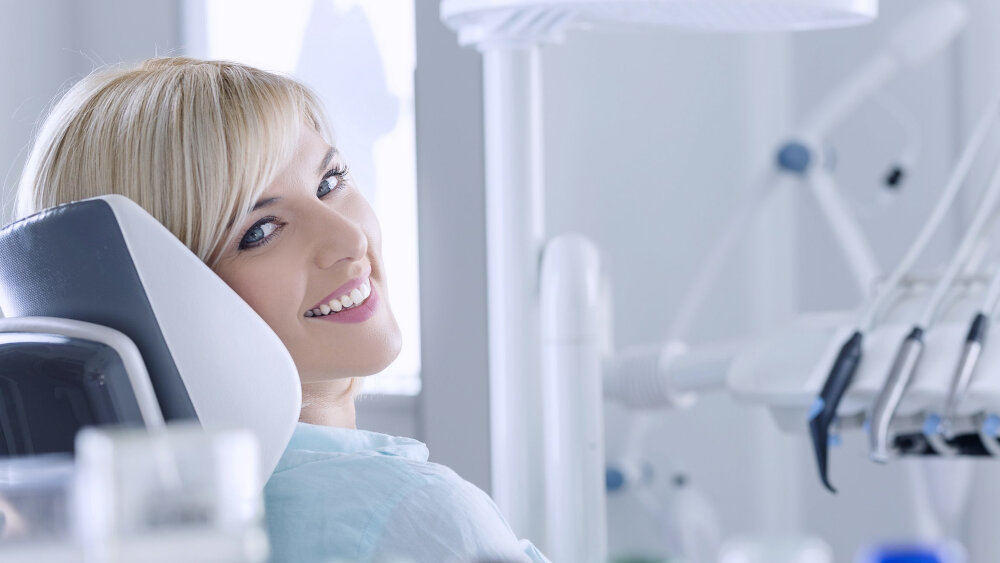
In conclusion, teeth shifting without a retainer is a common phenomenon that can occur after orthodontic treatment. The length of time it takes for teeth to shift varies depending on several factors such as age, genetics, and the severity of the initial orthodontic issue. While some individuals may notice their teeth shifting within a few weeks or months, others may not experience any noticeable changes for years. It is crucial for individuals to wear their retainers as prescribed by their orthodontist to prevent teeth from shifting and maintain their newly aligned smile. Neglecting to wear a retainer can lead to a relapse of the orthodontic issue, which may require additional treatment. In summary, it is important to prioritize wearing a retainer and follow the aftercare instructions provided by your orthodontist to ensure long-lasting results and a healthy, beautiful smile.

